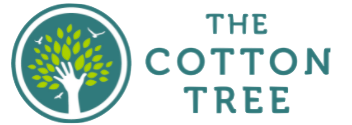The Storytelling group: how do we want to use this space together?
Like all living things, the Storytelling group is evolving.
We began as a small group around a long table with a roll of lining paper running from end to end. On the paper were felt pens and lumps of clay. We moulded and we drew. We asked questions, told stories, shared painful and happy feelings. Aided by the free play of our hands, our conversations connected us and lifted our spirits.
That was the Myth & Clay group. We were lucky to have Claire, whose hands contain hundreds of hours of clay-memory. Her habit of looking for deeper meanings behind stories, questions and conversations guided us without judgement or censure.
In time we became the Storytelling group, meeting every Monday in Highgate Library for about 2 years. We continued to explore feelings and meanings through conversation and stories from around the world. Two volunteers joined us: Judy, who organised food and brought insights about life, and Angela, an anthropologist who helped us to think about cultures.
In the Cotton Tree we try to reach deeper layers. When we ask, ‘how are you?’, we mean that we want to know. In everyday life people often forget about the question mark, but we do not.
The Storytelling group went online in March 2020, where we welcomed Claire back with her trustee husband George. Despite the frustrations of technology, we continued to enjoy each other’s company and touch each other’s lives.
The group is now going through another evolution. The Cotton Tree is blessed by the existence of Michael Ngyezi, a founder member who got refugee status in 2017. For the next few months, Michael will be facilitating the group.
Michael is a fantastic communicator. He leads our School Talks programme and captivates audiences by telling his story simply and directly. He throws out questions that send hands shooting into the air, and children throw eager questions back. No wonder a headmaster wrote in an email: “[Michael] helped to transform ‘refugee’ from abstract to concrete…. The story of his bravery and courage was inspirational…. Michael, we hope that you will visit us again next year and we trust that you will continue to consider yourself as a friend of the school."
Michael lived on the streets for several years. He is one of those rare people who can take others inside his horrific memories without actually traumatising them. When he speaks about his experiences, trauma is laced with hope and joy. Questions about the meaning of life are never far away.
Michael is passionate about bringing hope and practical help to people in asylum limbo. He asked the group to cooperate with this. “How do we want to use this space together?” he said last Monday. “What are we here for? How can we help each other? How can we protect our space? We need to value what we have!”
Everyone contributed ideas and summing these up, Michael said, “You don’t have to sleep on your pain alone. Bring your vulnerability to the group. Remember that our branch name is Heal & Grow.”
This suggests a boundary that the group went on to explore. People shouldn’t post ugly content on Whatsapp, where we connect with each other during the week. What good does it do to read scary posts when you’re alone in your room with little food, little comfort, hardly any friends around? Someone may discharge their rage by posting a video about a massacre in their country, but what harm might this do to others?
The group agreed. We meet not in hatred or violence, but in order to heal from these. If they need to discharge rage, members can speak privately to staff or volunteers. We are avid listeners.
On the subject of healing, might it be helpful to choose a new name? Might we re-name ourselves simply the “Heal & Grow group”?
Another question to bring to the group.
